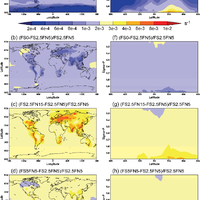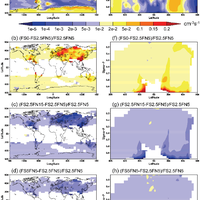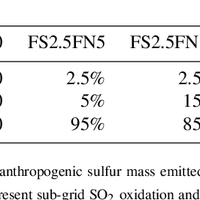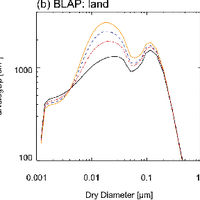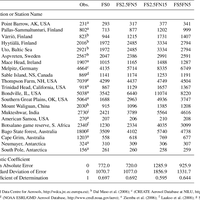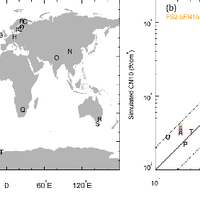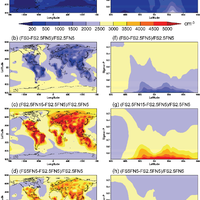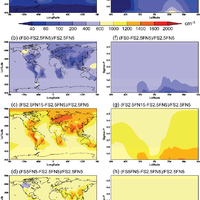Abstract
The impact of primary sulfate emissions on cloud condensation nuclei (CCN) concentrations, one of the major uncertainties in global CCN predictions, depends on the fraction of sulfur mass emitted as primary sulfate particles (fsulfate), the fraction of primary sulfate mass distributed into the nucleation mode particles (fnucl), and the nucleation and growth processes in the ambient atmosphere. Here, we use a global size-resolved aerosol microphysics model recently developed to study how the different parameterizations of primary sulfate emission affect particle properties and CCN abundance. Different from previous studies, we use the ionmediated nucleation scheme to simulate tropospheric particle formation. The kinetic condensation of low volatile secondary organic gas (SOG) (in addition to H2SO4 gas) on nucleated particles is calculated based on our new scheme that considers the SOG volatility changes arising from the oxidation aging. Our simulations show a compensation effect of nucleation to primary sulfate emission. We find that the change of fnucl from 5% to 15% has a more significant impact on the simulated particle number budget than that of fsulfate within the range of 2.5-5%. Based on our model configurations, an increase of fsulfate from 0% to 2.5% (with fnucl =5%) does not improve the agreement between simulated and observed annual mean number concentrations of particles >10 nm at 21 stations but further increase of either fsulfate from 2.5% to 5% (with fnucl =5%) or fnucl from 5% to 15% (with fsulfate = 2.5%) substantially deteriorates the agreement. For fsulfate of 2.5%-5% and fnucl of 5%, our simulations indicate that the global CCN at supersaturation of 0.2% increases by 8-11% in the boundary layer and 3-5% in the whole troposphere (compared to the case with fsulfate =0). © 2011 Author(s).
Figures
Register to see more suggestions
Mendeley helps you to discover research relevant for your work.
Cite
CITATION STYLE
Luo, G., & Yu, F. (2011). Sensitivity of global cloud condensation nuclei concentrations to primary sulfate emission parameterizations. Atmospheric Chemistry and Physics, 11(5), 1949–1959. https://doi.org/10.5194/acp-11-1949-2011

